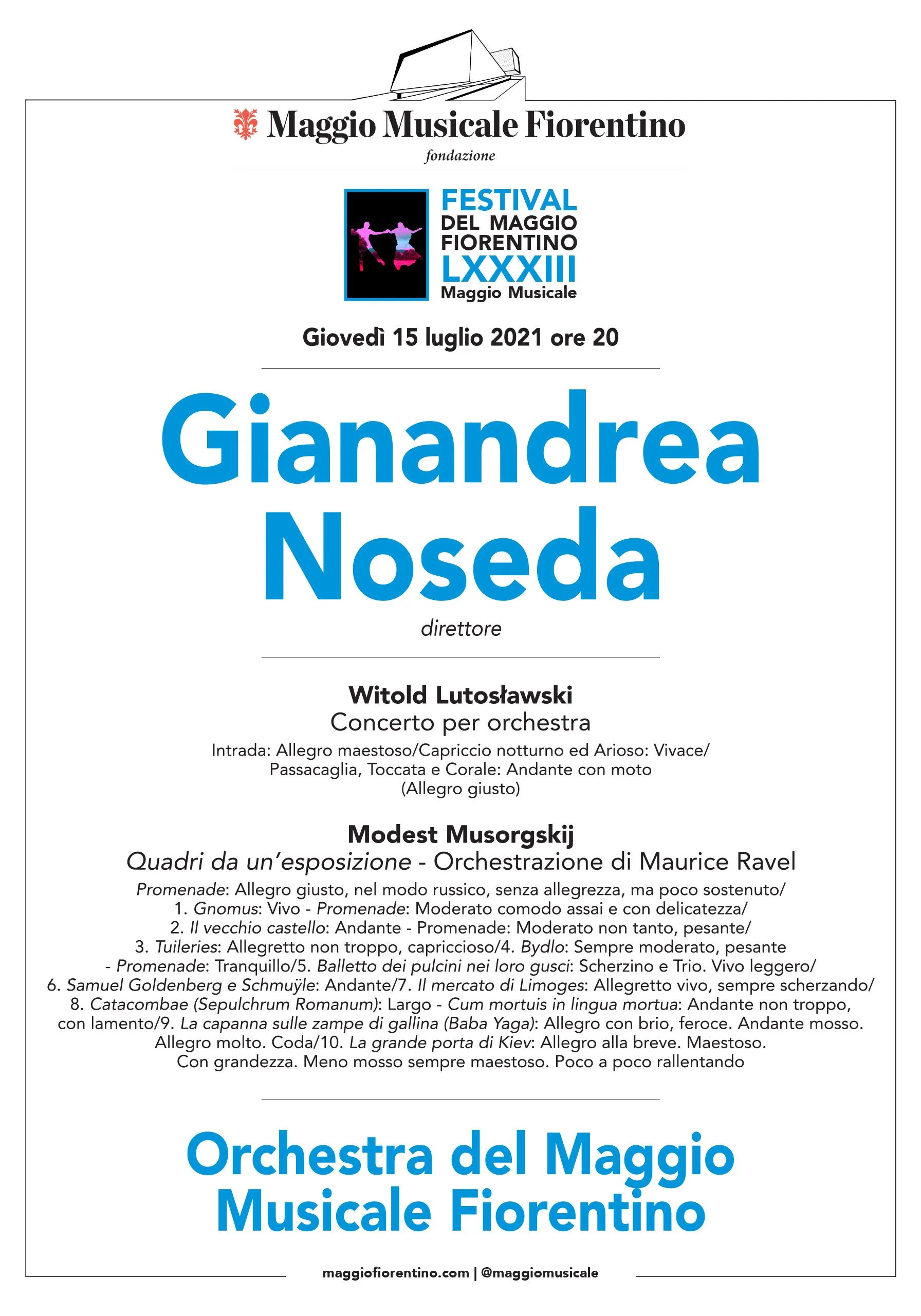Gianandrea Noseda
Programma
We kindly ask the audience to please read the COVID-19 informations about tickets and seats
Witold Lutosławski
Concert for orchestra
Modest Musorgskij
Pictures at an exhibition
-
Witold Lutosławski - Concert for orchestra
Polish composer and conductor Witold Lutosławski was a leading figure in the music scene of the second half of the 20th century. Author of four symphonies, various orchestral pages and chamber music, Lutoslawski had studied composition with Witold Maliszewski, a former pupil of Rimsky-Korsakov, from whom he had inherited a solid command of orchestral writing. The Concerto for orchestra was composed between 1950 and 1954 and baptized by the Warsaw Philharmonic conducted by Witold Rowicki on November 26, 1954. The use of melodic materials of Slavic folklore and the solo concertante writing bring it closer to the well-known and previous Bartók Concerto of the same name, author who influenced Lutoslawski's first production. Divided into three movements that recall the ancient Baroque forms (Intrada; Capriccio and Arioso; Passacaglia, Toccata and Corale) the Concert often engages the orchestra in blocks and sections: strings, woods, brass and percussion are involved, in turn, in solo passages and continuous shifts between registers (from low to high and vice versa) that highlight their technical and timbral qualities.
Modest Musorgskij - Pictures at an exhibition
Composed by Musorgskij in 1874 in memory of his friend Viktor Hartmann, painter and architect who died prematurely, the Quadri from an exhibition were originally born as a piano cycle which was later orchestrated by Maurice Ravel in 1922. In the Pictures Musorgskij describes an imaginary walk through the rooms of the Academy of Fine Arts in St. Petersburg where Hartmann's paintings were exhibited after his death. There are ten paintings re-proposed in as many musical panels interspersed with a promenade - an interlude with an ever-changing character - in which the author's visionary creativity returns multiple images: the lively vivacity of popular scenes in Tuileries and Limoges, the grotesque or macabre atmospheres that characterize Gnomus, Catacombae - Sepulchrum Romanum and La cabane sur des pattes de poule, the desolate song of a troubadour in the Old Castle, the breathless and heavy movement of the Polish chariot Bydlo, the pungent irony in the dialogue between the two Jews Samuel Goldenberg und Schmuyle , the very lively scurry of the Ballet of the chicks in their shells, up to the grandiose and final sound apotheosis of the Great Gate of Kiev.
Witold Lutosławski
Concert for orchestra
Modest Musorgskij
Pictures at an exhibition
-
Witold Lutosławski - Concert for orchestra
Polish composer and conductor Witold Lutosławski was a leading figure in the music scene of the second half of the 20th century. Author of four symphonies, various orchestral pages and chamber music, Lutoslawski had studied composition with Witold Maliszewski, a former pupil of Rimsky-Korsakov, from whom he had inherited a solid command of orchestral writing. The Concerto for orchestra was composed between 1950 and 1954 and baptized by the Warsaw Philharmonic conducted by Witold Rowicki on November 26, 1954. The use of melodic materials of Slavic folklore and the solo concertante writing bring it closer to the well-known and previous Bartók Concerto of the same name, author who influenced Lutoslawski's first production. Divided into three movements that recall the ancient Baroque forms (Intrada; Capriccio and Arioso; Passacaglia, Toccata and Corale) the Concert often engages the orchestra in blocks and sections: strings, woods, brass and percussion are involved, in turn, in solo passages and continuous shifts between registers (from low to high and vice versa) that highlight their technical and timbral qualities.
Modest Musorgskij - Pictures at an exhibition
Composed by Musorgskij in 1874 in memory of his friend Viktor Hartmann, painter and architect who died prematurely, the Quadri from an exhibition were originally born as a piano cycle which was later orchestrated by Maurice Ravel in 1922. In the Pictures Musorgskij describes an imaginary walk through the rooms of the Academy of Fine Arts in St. Petersburg where Hartmann's paintings were exhibited after his death. There are ten paintings re-proposed in as many musical panels interspersed with a promenade - an interlude with an ever-changing character - in which the author's visionary creativity returns multiple images: the lively vivacity of popular scenes in Tuileries and Limoges, the grotesque or macabre atmospheres that characterize Gnomus, Catacombae - Sepulchrum Romanum and La cabane sur des pattes de poule, the desolate song of a troubadour in the Old Castle, the breathless and heavy movement of the Polish chariot Bydlo, the pungent irony in the dialogue between the two Jews Samuel Goldenberg und Schmuyle , the very lively scurry of the Ballet of the chicks in their shells, up to the grandiose and final sound apotheosis of the Great Gate of Kiev.
Artists
Conductor
Gianandrea Noseda
Orchestra del Maggio Musicale Fiorentino
Gianandrea Noseda
Orchestra del Maggio Musicale Fiorentino
Tickets
Maggio Theater
Locandina




